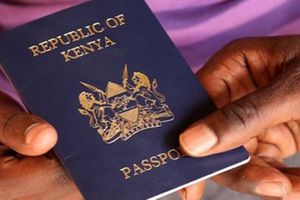A lump isn’t always breast cancer

A breast exam on yourself should be performed at least once every month. Photo | Sister Hood Agenda
What you need to know:
Many women don't go for a breast cancer exam because of fear or negligence.
I’ve always been amazed by this woman whom I met few years ago in Dar es Salaam. Her wisdom, outlook and life story has had a positive impact on the young generation like myself.
Meet Lulua Jamali, a 65-year-old lady who agreed to speak to Your Health about her journey on fighting the fear on breast cancer. She wants to share her journey to help many women out there to choose hope instead of fear and to help them gain confidence on takling the step.
It’s never too late
I’ve heard many women harp about the fact that age ‘50’ is too late to get a breast exam done. But for Mrs Jamali, it was different.
13 years ago, she underwent her first mammogram during her full body routine check-up. “Though I have a history of cancer in my family and also of benign cysts, I showed no signs hence never got myself checked. But at the age of 52, I decided to get one done and thankfully all my reports were clear,” Mrs Jamali tells.
She was advised to thoroughly do a self-breast exam regularly.
In 2008, she felt a lump in her left breast during one of her routine self breast exam. “There was neither pain nor tenderness but I still decided to get it checked. An ultrasound showed a mass which needed further investigation,” she says. The specialist who investigated further revealed that the lump was benign, meaning non-cancerous.
You got to be brave
Nine years down the lane, when Mrs Jamali had almost forgotten about her lump, she felt a sudden sharp pain in the left breast where the lump was located, few months back. “It felt as warm as a slight fever and a rush of thoughts streamed, what if it is cancerous!” Mrs Jamali confesses that it did freak her out.
Mrs Jamali was lined up the next day for yet another mammogram, ultrasound and a biopsy. She wasn’t new to the two tests but biopsy was something she was uncomfortable with as to how it would be conducted.
“The doctor inserted a syringe and sucked out about 5-10 ml of creamy/milky fluid. After removing the needle, they applied a little pressure on the area, and plastered the aread with a band-aid. The whole process was done with minimum pain, not even slight discomfort, I would say, and when I came out I had a relieved and happy bounce in my walk , which I did not have when I went in. Then the rest of the day, I was driving around with a childhood friend of mine who was visiting Tanzania. As good as if nothing had happened,” Mrs Jamali narrates her experience.
Her results showed normal but she was prepared for the worst case scenario. How? She says, “You got to be super brave in the fight against a worst case scenario. Yes it’s easier said than done, but the brave state of mind and your strong will power makes you win the war with this nasty disease.”
What she has to tell women who fear the tests
“My sincerest advice to every woman reading this article is to start by doing regular breast examinations on your own on a monthly basis to start with.
Also pay special attention to your breast if you are breast feeding, and if suspicious, get a doctor to check you, without any delay. Remember, any kind of cancer, especially breast cancer if caught in early stages is completely treatable and curable”.


